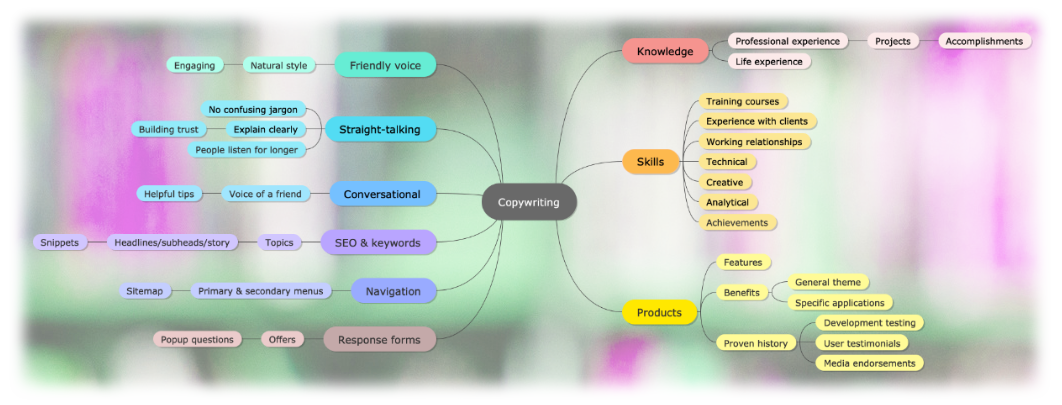
Website copywriting is all about getting your message right and attracting the right audience.
Website dynamics influence people’s behaviours and change the way they navigate through information. This makes it different to copywriting for print.
People tend to dip into random pages rather than read sequentially, especially if they’ve arrived on a page via a search engine. They hopscotch around your website, clicking on headings, banners and blog articles.
The best approach to structuring your website content is to write layers of self-contained summaries with links to detailed information pages via headings, navigation links and preview offers.
The first layer might introduce a series of services summaries with an action link to read more or apply for a free offer. The second layer will be a dedicated service page with useful information and a compelling offer and reason to get in touch. The third layer might be a technical specification or download page.
Making information clear and easy assimilate is key to maintaining people’s attention. This means providing summaries, articles and news in bite-sized sections with compelling images and videos.
Do I have your attention?
Headlines are all about getting attention. The best headlines are compelling and deliver what they promise in the supporting text.
Click bait headlines annoy people and waste their time. They’re there to get ‘clicks’ and offer no value and never deliver what they promise. How many times have you searched for a phrase, clicked on a heading and the article doesn’t deliver? The same is true with video headlines. This may increase clickthrough rates, but it’s the quickest way to lose credibility.
Write for people not search engines
Have you ever done business with a search engine? People do business with people. Keyword searches are very useful in identifying topics and trends to write about, but don’t allow them to dominate the writing process.
Before creating your website, you need to determine how the website is going to be used. There are many types and they use content in different ways, which changes the user’s experience. Below are some familiar examples and how they interact with each other.
Information services
These are websites providing information about news, health, finance, travel to government services, societies, professional bodies and charities. They will use articles, images and videos.
Service marketing
Service marketing is a large sector and includes businesses such as builders, hairdressers, complementary health practitioners, law firms, architects and surveyors.
Many service businesses will also offer products too such as software and mobile apps.
Product marketing
Amazon and eBay are popular examples of large product marketing websites.
Major retail stores, sports companies, antique dealers, arts and crafts businesses fall within this area.
Social media
Large social media sites like LinkedIn, Instagram and Facebook are community websites. Most major companies, universities and societies will have their own communities and followers on these platforms.
1. Building website without planning your message first
2. Not stating what your business is about on the home page
3. Not having a clear proposition
4. No call to action phrases
5. Not coordinating website activity with other marketing campaigns
Careful planning minimises risk and ensures a successful launch
Planning your message and navigation is key to designing a successful website. All too often, the website is designed first and the content added as an afterthought. The purpose of design is to facilitate the messaging for your articles, images and videos. The visual and verbal elements should work as an integrated unit.
Plan tasks in the correct order
1. Plan your messaging first
2. Decide on types of content to deliver your message such as articles, photography and videos
3. Design and build website to facilitate your message and marketing plan
Contact Francis Newman for more detailed advice
on planning your website content.
© Message Matters 2022. All rights reserved.